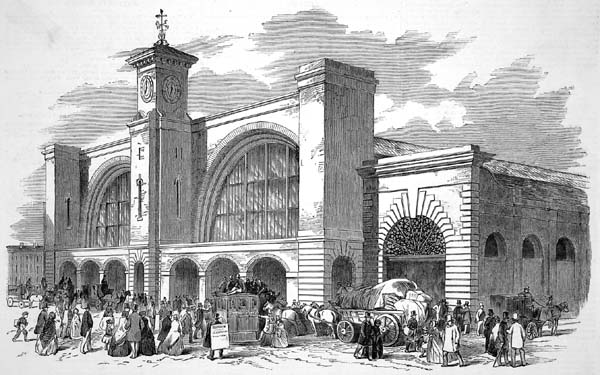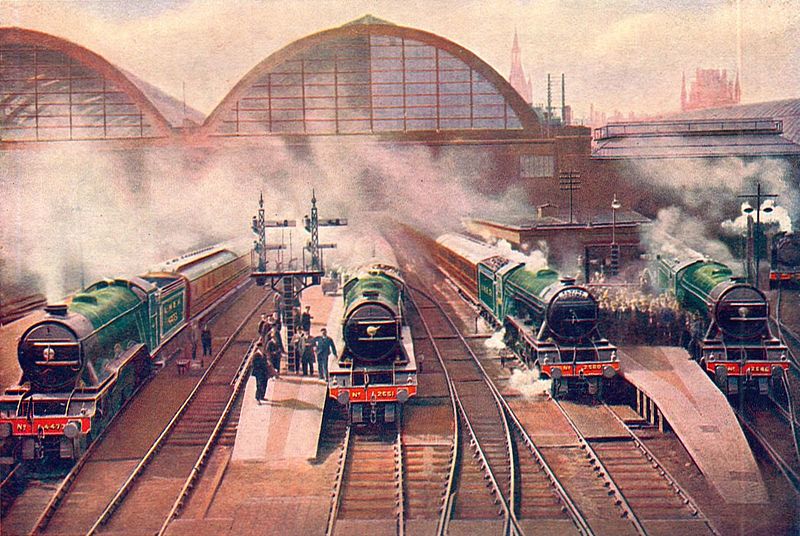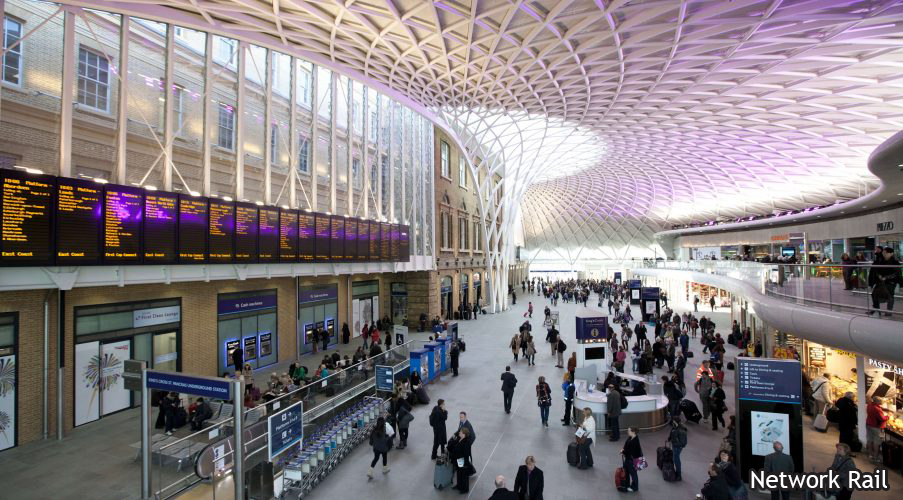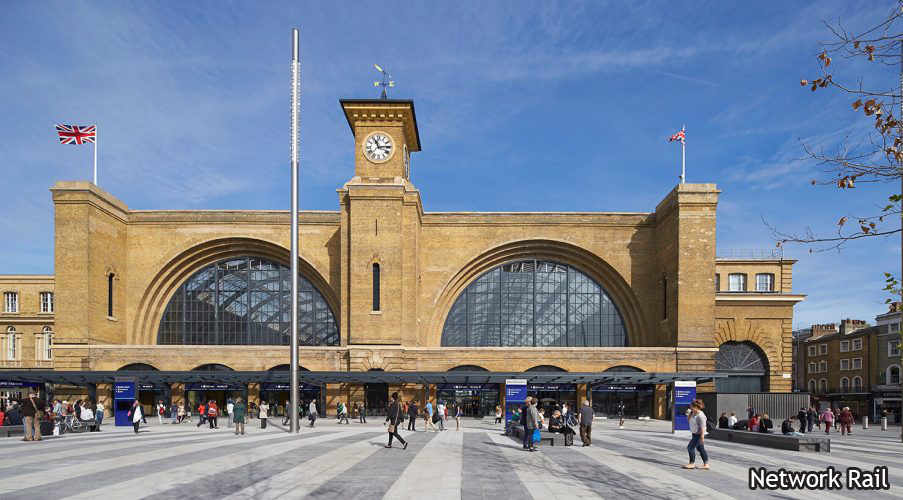

 STUART JORDAN looks at the development of this terminus in London.
STUART JORDAN looks at the development of this terminus in London.
King’s Cross is a large passenger terminus, one of the main termini in London. It serves as the southern end of the East Coast Main Line which runs up to the North East of England, and Scotland. The station is situated in the Borough of Camden, adjacent to St Pancras International and close by to London Euston.

The Station in 1852.
When King’s Cross opened in 1852 it was the largest station in England. The station was built as the London terminus of the Great Northern Railway, and it was named for the nearby monument to King George IV. GNR engineer George Turnbull made the plans for the station in 1848 and the building itself was designed by Lewis Cubitt. Cubitt’s design comprised two large arched train sheds with a building at the southern end complementing this design. A central 112-foot-tall clock tower completed the façade.
Soon, half the traffic at King’s Cross was suburban, serving stations in North London. A link was made to the London, Chatham and Dover Railway via the Metropolitan Line, allowing services to South London and beyond. The platform configuration had to be changed several times to cope with an increase in traffic.
The Railways Act of 1921 saw the GNR amalgamated into the London and North Eastern Railway. King’s Cross became synonymous with the famous Flying Scotsman service to Edinburgh and the LNER A3 and A4 Gresley Pacific locomotives, including 4472 Flying Scotsman and 4468 Mallard.

Morning rush from King's Cross to the North, 1928.
In 1948 the railways were nationalised, and the station became part of British Railways Eastern Region. Steam was phased out, with all mainline services replaced by diesel-hauled trains by mid-1960s, mainly pulled by Class 55 Deltics before the introduction of the Intercity 125. The 1970s saw the Great Northern Suburban Electrification project and by the end of the decade overhead cables had been completed allowing electric train services to Hertfordshire. This service was extended all the way to Edinburgh by the turn of the 1990s.
The station was linked to the newly built Victoria Underground line in 1968, having only previously been linked to the Piccadilly line. King’s Cross shares an underground station with St Pancras. The station is also linked to the Hammersmith & City, and the District and Circle lines
Once British Rail was privatised in 1996, Great North Eastern Railway took over express services from King’s Cross, using Intercity 225 electric trains. The running of the East Coast Mainline then entered a period of mismanagement when GNER surrendered the franchise in 2006. National Express East Coast briefly took it on, but in 2009 it returned to public ownership when National Express refused to finance it. It traded as East Coast until 2015 when the franchise was privatised again as Virgin Trains East Coast. Due to losses, the route was then taken back into government control in 2017 and now runs as LNER under public ownership.

The new concourse section with triangular glass roof panels.
The 2000s saw extensive renovation of the station. The original train shed roof was restored and reglazed and a new departures concourse was built. A new plaza was constructed at the front of the station, replacing the 1972 temporary building constructed to access the tube station. The project cost Network Rail around £500 million.
Four train companies currently run services from King’s Cross; LNER runs high speed inter-city links up the ECML, Thameslink and Great Northern run suburban services to North London and adjacent areas such as Hertfordshire and West Norfolk, Hull Trains runs trains (unsurprisingly) to Hull up the ECML, and Grand Central runs services to Bradford and Sunderland.

King's Cross Station from the plaza.
The station is featured in many cultural depictions, probably most famously in the Harry Potter books and films, with the Hogwarts Express departing from Platform 9¾. The station yard was also used in the Ealing comedy The Ladykillers. The station is one of four LNER termini stations to feature on a Monopoly board.